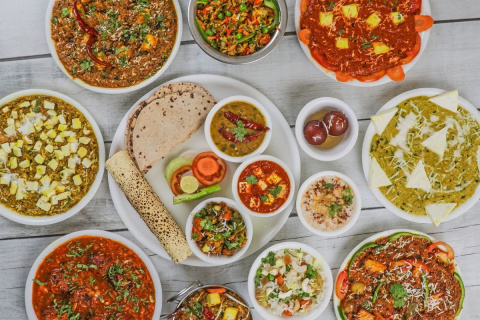
Garudiya is a clear, sour fish broth. It is one of the staples of traditional Maldivian food. The broth is made from different types of tuna caught in coastal waters such as skipjack (canyumas or goya), yellowfin tuna (canneli), small tuna (lasi) or frigate tuna (raagoni). Cold soup is usually eaten with steamed rice, but it can also be eaten with shrimp, pepper chapatis, or chili, lime and onion. Grilled fish with hot pepper is popular.
When it comes to drinks, it is important to remember that Maldivian culture and traditions are influenced by Islam. It is impossible to buy alcoholic drinks in most stores. But at the resorts, travelers can taste exotic alcoholic cocktails from a mixture of juicy, aromatic fruits and rum, coconut vodka. The local population on the island is mainly popular with raa, which is the sweet sap of the palm tree. It is obtained from the tops of trees. Gaa is an amazing low-alcohol drink made from fermented palm milk. Sometimes it is served even during fermentation.
Tea is drunk with a lot of milk and sugar; regular black tea is not common. Coffee is not very popular due to its high cost. There are quite a lot of fruits on the islands, so fruit juices are popular.
Traditional Maldivian breakfast – mas huni. It is made with tuna, coconuts, onions and chili. If tuna is not available, sweet potatoes or the leaves of some local plants can be used. All ingredients are finely chopped and served alongside roshi, a local bread made with flour, salt and water. This breakfast is washed down with sweet tea.
The Maldivians do not eat raw fish, unlike many Asian nations. Tuna is dried or smoked. Gulha is a traditional Maldivian tuna snack. These are small dumplings made from tuna, onions, coconut and chili with the addition of white or rice flour. Sometimes turmeric, lime juice, curry leaves are added. The dumplings are then fried or baked. The size of the dumplings can range from marbles to ping pong balls. Masroshi is also made from tuna with chili and onions. They resemble small pancakes. Bajiya is a stuffed fried or baked dough. This is a variation of the Indian dish samosa. Tuna and onions are used as the filling.
Kuliboaakiba or fish pie has been prepared especially for festivals and celebrations for a long time. Nowadays, fish pie is also eaten as a snack during evening tea. Traditionally, a large baking dish with a flat lid is used. The fire is made using coconut shells. After the shells have burned out and there is no flame, the cooks put the pan on the fire and put the shells (which are still burning) on top of the lid. Thus, the cake is baked at the same time from the top and bottom.
Rihaakuru is a thick fish paste. The color ranges from light to dark brown. Pasta has been a daily Maldivian dish since ancient times. Making pasta does not require much work, but it does take time. Tuna is boiled with salt for many hours. Then the tuna is removed, and the remaining fish soup continues to cook until it finally thickens. Pasta is eaten with roshi bread, rice, taro leaves or breadfruit. A more delicious version of the pasta is called theluli rihaakuru, it is obtained by adding fried onions, curry leaves, chili. When coconut milk is added to the paste, a dish called rihaakuru diya is obtained.
Rice, taro leaves, sweet potatoes, cassava, breadfruit (boiled), pandanus (eaten raw) are used as side dishes. Curry is a collective name for different types of food. There are meat (chicken) and vegetable curries. Vegetables are prepared from eggplant, luffa, pumpkin, trichozant, moringa, green bananas. Curry is eaten with rice or roshi.
